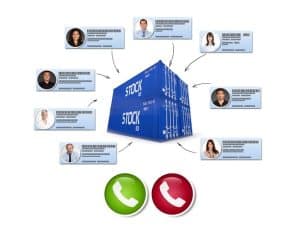Omnichannel Customer Support: The Modern Business Essential
Understanding Modern Customer Support Evolution
Customer support has radically changed from the days of single telephone lines and basic email systems. British businesses have discovered that customers expect seamless interactions across multiple platforms, creating a unified experience that feels natural and straightforward.
Take Sarah’s boutique fashion company in Manchester. After struggling with customer enquiries across various platforms, she partnered with an administrative support team in the Philippines. The team now manages all customer communications through a centralised system, resulting in a 40% improvement in response times and a 65% increase in customer satisfaction scores.
Building Integrated Support Foundations
Successful omnichannel support requires seamless data flow between platforms. Creating this infrastructure demands careful planning and robust systems that can handle multiple communication streams simultaneously. Modern businesses must ensure their channels work together rather than competing or creating information silos.
Consider Thames Valley Electronics, which struggled with disconnected communication channels until partnering with offshore support specialists. Their dedicated team now manages a unified system, handling everything from social media to email enquiries, saving the company £150,000 annually while improving customer satisfaction ratings.
Essential Communication Platforms
Modern customer support spans numerous channels: social media, chat systems, email, telephone support, and self-service portals. Each channel serves specific customer preferences and needs, but they must function as part of a cohesive whole rather than separate entities.
Brighton-based software company DataFlow found success by engaging an overseas team to manage their various communication channels. This approach allowed them to provide 24/7 support across all platforms while reducing operational costs by 35%.
Overcoming Implementation Hurdles
Setting up an effective omnichannel system presents several challenges, including technical requirements, training needs, and budget constraints. Companies must carefully balance these factors while maintaining service quality and consistency.
A London marketing agency tackled these challenges by gradually transitioning to an outsourced support model. Their remote team handled the technical implementation and training, reducing the burden on internal resources and cutting implementation costs by 45%.
Performance Tracking and Analysis
Measuring omnichannel support success requires comprehensive monitoring of key metrics, including response times, resolution rates, and customer satisfaction scores. These measurements help identify areas for improvement and validate investment returns.
Yorkshire Manufacturing Ltd implemented advanced tracking systems through their outsourced support team, leading to data-driven improvements that increased customer retention by 28% and reduced support costs by £200,000 annually.
Preparing for Tomorrow’s Support Needs
Future-ready support systems must accommodate emerging technologies and changing customer expectations. This includes integrating AI capabilities, automated responses, and predictive analytics while maintaining the human touch customers value.
Cambridge Tech Solutions partnered with specialist support providers to develop and maintain their future-focused support infrastructure, resulting in a 50% reduction in query handling time and improved scalability for future growth.
Learning from Success Stories
Real-world examples demonstrate the practical benefits of well-implemented omnichannel support. Leading companies have shown that strategic implementation, coupled with the right support partners, drives significant improvements in customer satisfaction and operational efficiency.
Edinburgh Financial Services transformed their customer support by engaging dedicated offshore teams, achieving 24/7 coverage and reducing operational costs by 40% while maintaining British service standards.
Strategic Implementation Steps
Successful omnichannel support implementation requires careful planning, appropriate platform selection, and comprehensive training programmes. Companies must develop clear timelines and establish monitoring systems to ensure consistent service quality.
A Birmingham retailer worked with external support specialists to develop and execute their implementation plan, completing the transition three months ahead of schedule and under budget while maintaining service continuity.
Moving Forward
Creating effective omnichannel support requires careful planning, appropriate resource allocation, and ongoing commitment to service excellence. Companies should focus on building sustainable systems that can adapt to changing customer needs while maintaining efficiency and cost-effectiveness.
Strategic partnerships with specialist support providers have proven crucial for many British businesses, enabling them to deliver superior customer service while optimising operational costs and maintaining competitive advantages in their respective markets.






